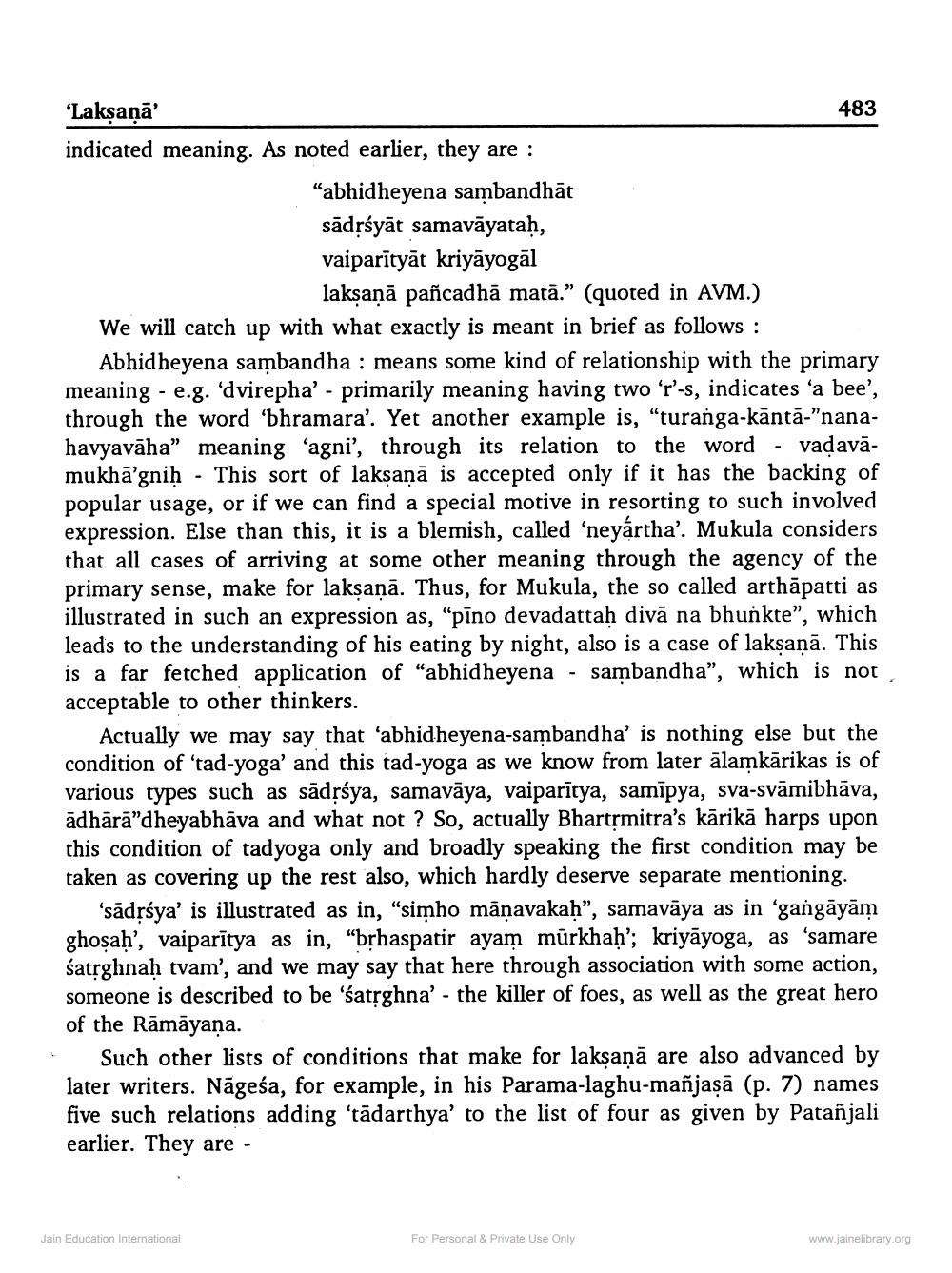________________
"Laksanā
483 indicated meaning. As noted earlier, they are :
"abhidheyena sambandhāt sādrśyāt samavāyataḥ, vaiparītyāt kriyāyogāl
lakṣaṇā pañcadhā matā.” (quoted in AVM.) We will catch up with what exactly is meant in brief as follows :
Abhidheyena sambandha : means some kind of relationship with the primary meaning - e.g. dvirepha’ - primarily meaning having two ʻr-s, indicates ‘a bee', through the word 'bhramara'. Yet another example is, “turanga-kāntā-"nanahavyavāha” meaning ‘agni', through its relation to the word - vadavāmukhā'gniḥ - This sort of laksanā is accepted only if it has the backing of popular usage, or if we can find a special motive in resorting to such involved expression. Else than this, it is a blemish, called 'neyártha'. Mukula considers that all cases of arriving at some other meaning through the agency of the primary sense, make for laksanā. Thus, for Mukula, the so called arthāpatti as illustrated in such an expression as. "pīno devadattah divā na bhunkte", which leads to the understanding of his eating by night, also is a case of laksanā. This is a far fetched application of "abhidheyena - sambandha”, which is not acceptable to other thinkers.
Actually we may say that abhidheyena-sambandha' is nothing else but the condition of 'tad-yoga' and this tad-yoga as we know from later alamkārikas is of various types such as sādrśya, samavāya, vaiparītya, samipya, sva-svāmibhāva, adhārā”dheyabhāva and what not ? So, actually Bhartsmitra's kārikā harps upon this condition of tadyoga only and broadly speaking the first condition may be taken as covering up the rest also, which hardly deserve separate mentioning.
'sādrśya' is illustrated as in, "simho māņavakah”, samavāya as in 'gangāyām ghoṣaḥ, vaiparītya as in, “brhaspatir ayam mūrkhaḥ'; kriyāyoga, as 'samare śatrghnah tvam', and we may say that here through association with some action, someone is described to be 'satsghna' - the killer of foes, as well as the great hero of the Rāmāyaṇa.
Such other lists of conditions that make for lakṣaņā are also advanced by later writers. Nāgeśa, for example, in his Parama-laghu-mañjasā (p. 7) names five such relations adding ‘tādarthya' to the list of four as given by Patañjali earlier. They are -
Jain Education International
For Personal & Private Use Only
www.jainelibrary.org




